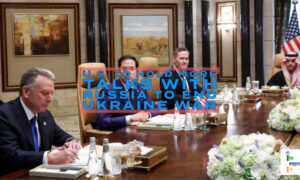
Italy has become the first NATO and G7 country to joins BRI – much to the chagrin of US
Italy has become the first G7 Nation to join China’s Belt and Road Initiative (BRI), also knows as New Silk Road Project. Despite a warning by United States, Italy on Saturday joined China’s signature foreign initiative , making it the first NATO country to do so.
The Prime Minister of Italy – Giuseppe Conte has signed a Memorandum of Understanding (MoU) with the President of China – Xi Jinping in Rome, to take part in Beijing’s New Silk Road Project involving transport and trade links, stretching from Asia to Europe.
A total of 29 MoUs were signed worth 5 to 7 billion euros (U.S. $ 5.6 to 8.0 billion). The accords were also signed by the Chairman of the National Development and Reform Commission – He Lifeng and Deputy Prime Minister and Minister of Economic Development, Italy – Luigi Di Maio.
The MoUs cover cooperation in the banking sector, a partnership between a Chinese construction company and Italian Ports and the export of fruit from the Mediterranean country to China. The agreements also include collaboration amongst media houses, as well as in the spheres of science and technology. Besides, Italy also promised to return hundreds of Chinese cultural objects, currently in Italy.
The value of the Chinese investments could rise to 20 billion euros but as of now it is limited to the strategic ports of Genoa and Trieste.
Italy based Ansaldo Group, has won a contract for making wind turbine, and the Danieli Group has bagged a 1.1 billion Euro deal to build an iron and steel plant in Azerbaijan. The accords also mark the opening up of Chinese market for Italian oranges and cultural tie-ups including town twinning.
Speaking on the occasion, Luigi di Maio said, “There is a lot of ‘Made in China’ coming into Italy and too little ‘Made in Italy’ that goes into China. Italy now hopes for a substantial and gradual increase of exports to “balance out the trade imbalances.”
What is BRI?
BRI was announced in 2013 to build a ‘belt’ of overland corridors and a ‘road’ of maritime shipping lanes spanning Asia, the Middle East, Africa and Europe. Over the period, the scope of BRI expanded to include digital infrastructure and cultural exchanges.
Its main objective is to strengthen China’s trade and investment links with the rest of the world and strengthen its position as a major global economic leader. The BRI projects are funded by Chinese State-owned enterprises that offer affordable loans and credit to participating countries. According to Morgan Stanley, China’s investments in BRI countries will reach U.S. $ 1.3 trillion by 2027.
However, the BRI scheme is also seen as debt-trap diplomacy by critics. They opine this is a masking of military endeavours as commercial enterprises.







